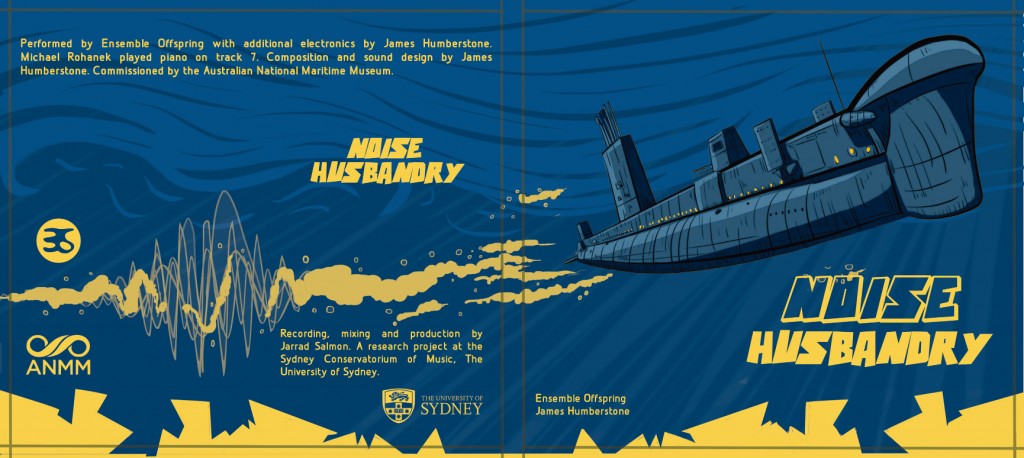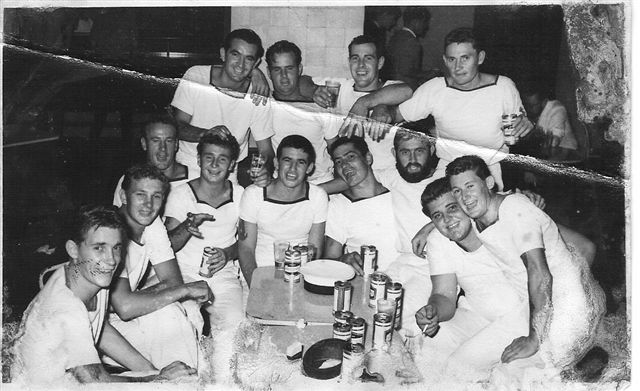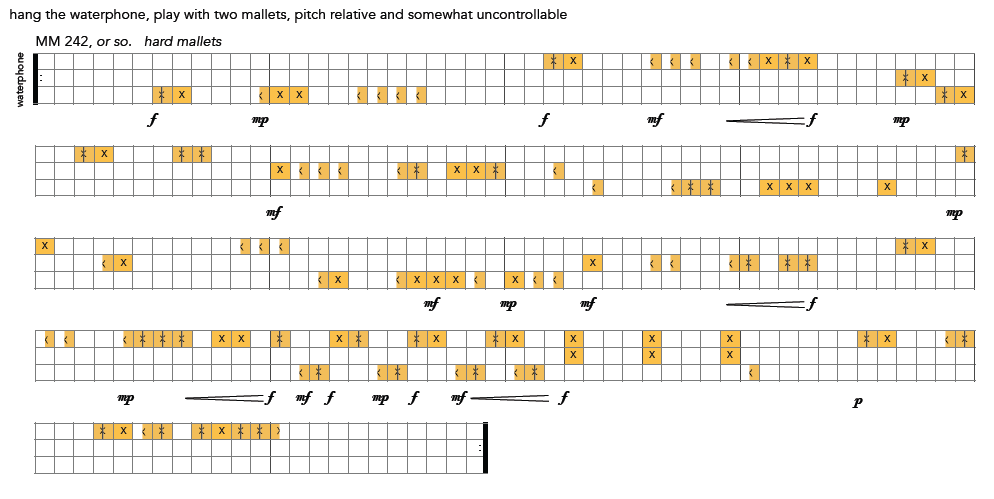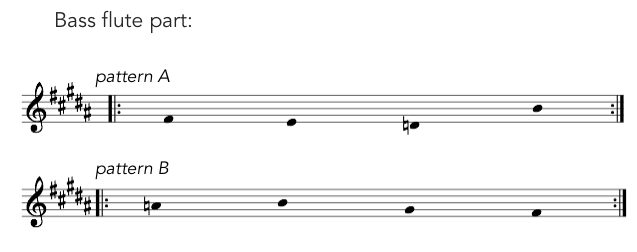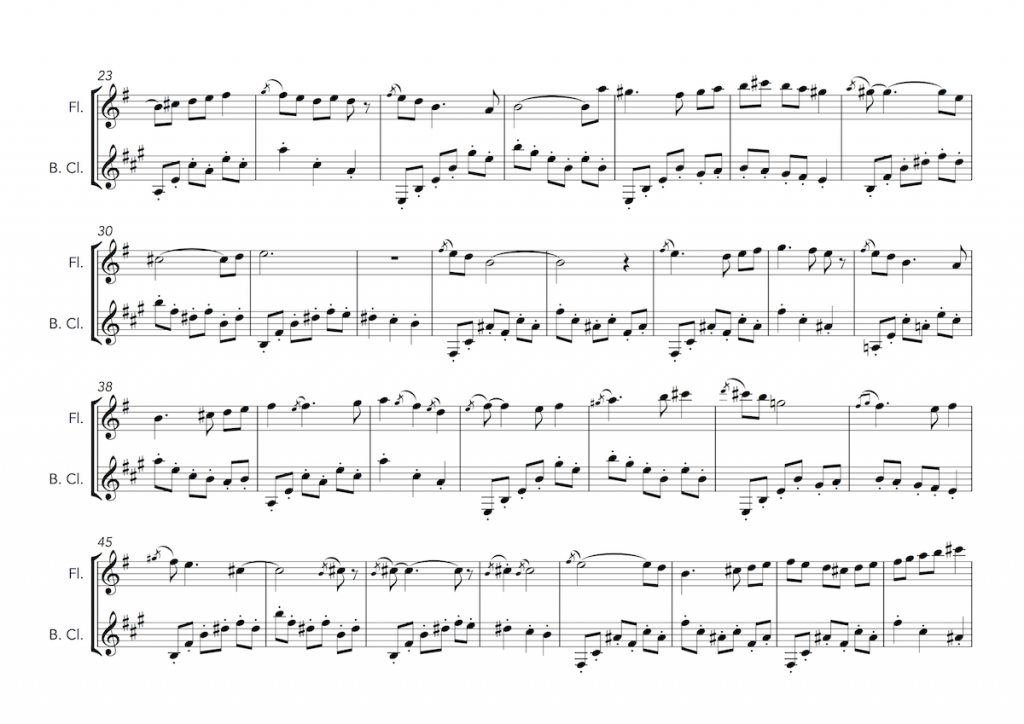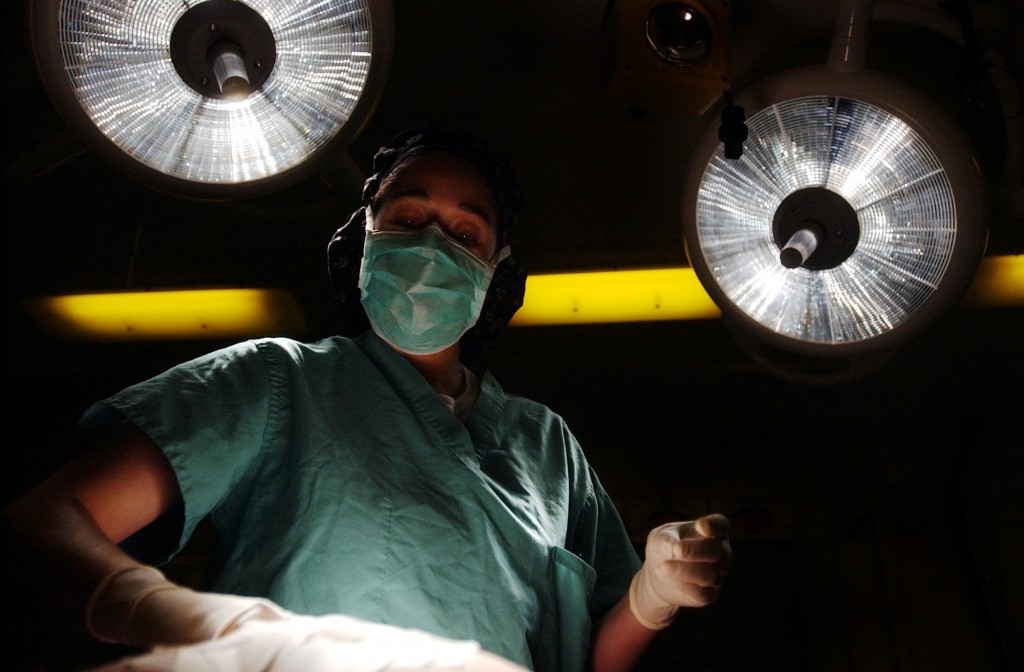It’s not just students who leave it until the last minute…
Well, it’s recording day today. I woke up at 4am with an idea for the one bit of scoring I hadn’t been able to do … the contrasting section in Family. And it just flowed out … so here’s what I wrote (the new section begins at 1:30):
Now to go and record it!
Mate-ship mock-up
The Hendrix-y music that I mentioned in the last blog was finished today, and I’ve made a mock-up with the abstracted voices that I shared yesterday as well as some kitchen sounds which are appropriated from Chamber Surgery. Here’s that very mock-up:

Source: Wikimedia (CC)
Hendrixing it out in the name of mateship (mate-ship)
The storyworld and MOD’s design for the galley is to show the camaraderie that is so often described by the crew over the decades that HMAS Vampire was in service.
I’ve decided to take a double approach to achieving this in sound. In the MOD specification, they suggest the kinds of sounds that would have been around the galley – laughter, shouting, chatting – but my brief is to abstract didactic sounds everywhere. So my plan is to head into a bar, find some boisterous Aussie-accented blokes to record, and then to make those samples sound like distorted memories – long ago, swirling around the space, but also still recognisable as voices. I captured some speaking on the internet today to mock this up with (I’m not going to tell you where it’s from, but if you recognise it you’ll see I was being very cheeky), and was pretty happy with the results…
The second part of the double approach is to return to the playlist, or at least the concept of having a playlist from the time that the vessels were in service, and to write a piece that mimics the rock-funk of Jimi Henrix, but in this case for Ensemble Offspring, adding to the abstracted and even surreal nature of the sound. I’ve made a few sketches and I’ll complete a digital draft to share soon.
White noise for waves and sickness
The final piece that I’d like to record on the vessels themselves is the piece for the Sick Bay, which I’m calling Waves (MOD have this fabulous visual idea of projecting moving light like waves around the sick bay … sea sickness …). I wanted to create an abstracted “sea sound” (i.e. not an obvious cheesey sea sample complete with seagull cries) to underpin this, and it was a remarkably easy thing to do in Ableton Live following on from the sound design course at Liveschool.
Over this will be more experimentation with dissonant extended techniques on the bass clarinet and bass flute, plus another wheel-bells part – but this time 6 wheels for one player. And, of course, the waterphone again, meaning that this sound opened and closed the tour through Vampire. Altogether, it should be quite eerie and sick-making…
crossing the line, movement ii., mock-up
Last month I posted a mock-up of movement i of what I hope will be a four-movement work (using the same strange instrumentation), crossing the line. The idea is that in the installation the four movements are played back in a random order, for random lengths of time, perhaps even overlapping, so that no two listeners get the same experience.
MOD call this the “procedural player”, which I can give instructions like “play one track for 30 to 120 seconds, then crossfade to another track randomly, then repeat” or, if they’ve got a sensor, respond by changing the sounds to e.g. someone’s presence in the room. Pretty cool stuff.
The above track is a mock-up using the same sample set that I made for movement i. What I have in my head is much more pretty and subtle, using the engineering wheels on the vessel, but this is good enough to give MOD some placeholders as they trial out some key spaces to see if the installations will work.
Using the onboard spaces – Navigator’s room
We’ve now settled that we’ll need at least two recording dates with Ensemble Offspring – one (probably two) in the studios at the Sydney Conservatorium and one onboard the vessels. The Gun Room percussion will be recorded in the Gun Room (funnily enough), and the engineering wheels for Crossing the Line in the steam room or somewhere similar on HMAS Vampire.
I’m keen to make the most of recording in that space, so I’m planning to use the sounds that we discovered in the workshops in some of the other works. The mock-up above is for a piece for the Navigator’s Room, which I’m calling Seventh Secrets. The narrative behind both the Navigator’s Room and the Officer’s Cabin feature secrecy, mystery, and the unknown. Since these spaces are right next to one another, I am planning for bleed and creating two ‘movements’ that will fit together should someone be standing in the corridor between the rooms.
The material in the bass and flute parts is like a “time-stretched” version of melodic snippets from the playlist. The bass flute and the bass clarinet have two four-note patterns each which they can repeat and move between at will. However, tempo is not up to them – they must hold each note for a complete breath.
The bass flute and bass clarinet parts are to be recorded and triggered against the live performance. This can be achieved in a number of ways, for example:
- pre-record the flute and bass clarinet lines, and trigger them like a traditional “tape” performance (for the recording for the installation, record several takes of these repeated lines, and assemble them in the studio)
- for the installation, the procedural player can bring lines in and out with random variables
- record the flute and bass clarinet lines live in performance, and play them back after a certain length of time
- triggering could be done live by the performer (e.g. pedal or computer switch) or by a producer/recording engineer/DJ.
This creates a slowly shifting harmonic field with four voices.
The percussionists punctuate this process with orchestral-like crashes, but in this case, they’ll be improvising on some of the bigger objects on the ship or submarine that make good sounds… as usual, in the mock-up above I’ve just used some samples to approximate what I think it will sound like.
Chamber music, darling?
Today I composed the prissy chamber music that will go with the dining in the Ward Room. If you’re not following how the Ward Room’s strange installation works, read the last few blogs. This music will accompany the dining sounds, and contrast with the squelching and stabbing that will go along with the surgery…
A day spent sampling
Moving on from yesterday’s post, I mentioned that I wanted to have the eating and surgery sounds made by the percussionists, quasi-rhythmically. However, I also need to be able to mock up all of these tracks for MOD Productions as they test out the installation, and this space is one of the spaces we intend to test out first.
So today I spent the day creating a virtual cutlery and surgery set: samples of the sounds of those things, anyway, which I can now play back in Ableton live and compose with. Just like the Gun Bay and Crossing The Line samples, I can’t create something that’s as good as having real musicians recorded live, but it will make a fine mock-up, I think. The video above shows some of this stuff working, along with the clock ticking which makes it easier to hear that the sounds are actually slightly rhythmic.
Here’s a crazy idea
The sound for the Ward Room (one of the biggest, nicest spaces on the ship, used for entertaining … it even has a piano!) has been influenced by MOD’s design for narrative. It turns out that the dining table in this space had two uses … as a dining table (funnily enough), but also as the surgeon’s table if there were several injuries or the cramped Sick Bay wasn’t big enough.
So the idea for the installation piece is this: there will be two silhouettes, on of a person dining, and one of a person eating. These will change depending on where you are in the room. Similarly, the sound will change – from relatively didactic eating noises and metaphorical drawing room chamber music, to simulated sounds of surgery (not sure how I’ll do that yet, but I’m thinking percussionists with a scalpel and a watermelon sounds fun) and dissonant extended techniques from the instruments will be the kind of sound I’ll create. Perhaps I’ll actually link this all together with another drawing room sound, like a grandfather clock, so that the eating and surgery sounds can be diegetic but also slightly musical, all at once …
More to come on this one as I work on it over the next few days.
